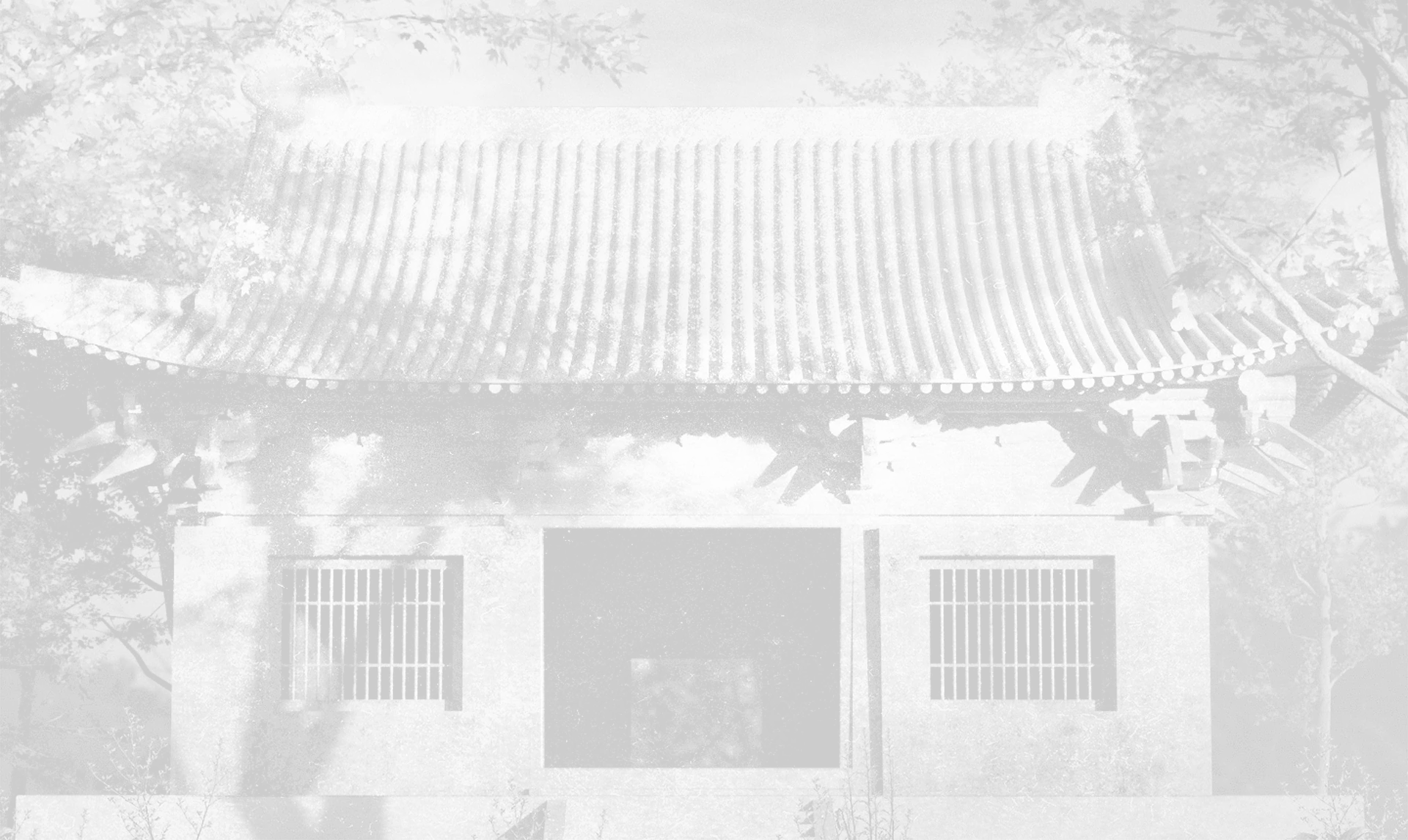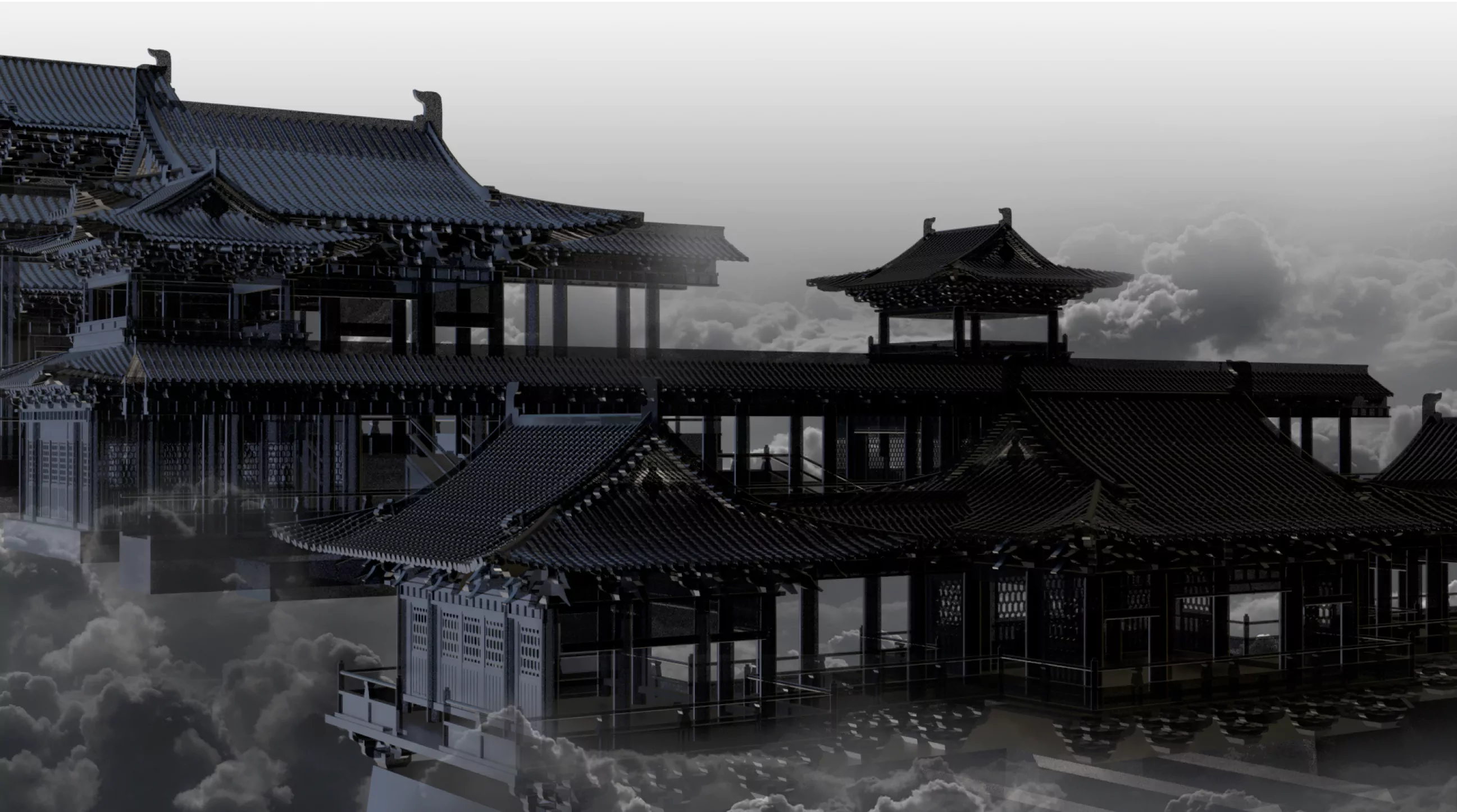
MANIFESTING TUSITA HEAVEN
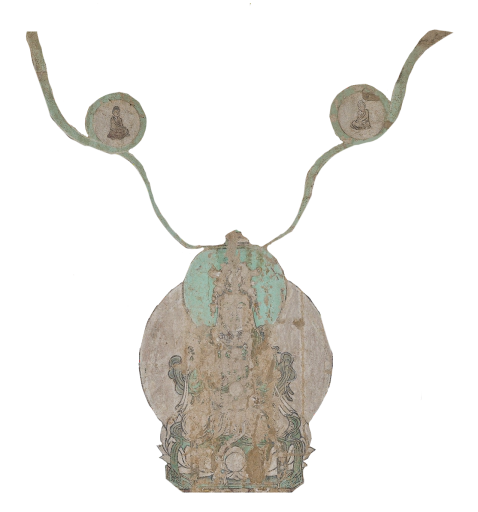
Design The Palace of Tuṣita Heaven
As a painter, you’ve been asked to paint the Palace of Tuṣita Heaven using excerpts from the Sūtra of Maitreya’s Ascension 佛說觀彌勒菩薩上生兜率天經 and the Northern Song construction manual Yingzao fashi 營造法式 (Building Standards). Interpret the quotes from these primary sources and unleash your creativity by constructing the Heavenly Palace they describe as it might have been designed in the Northern Song Dynasty.

-
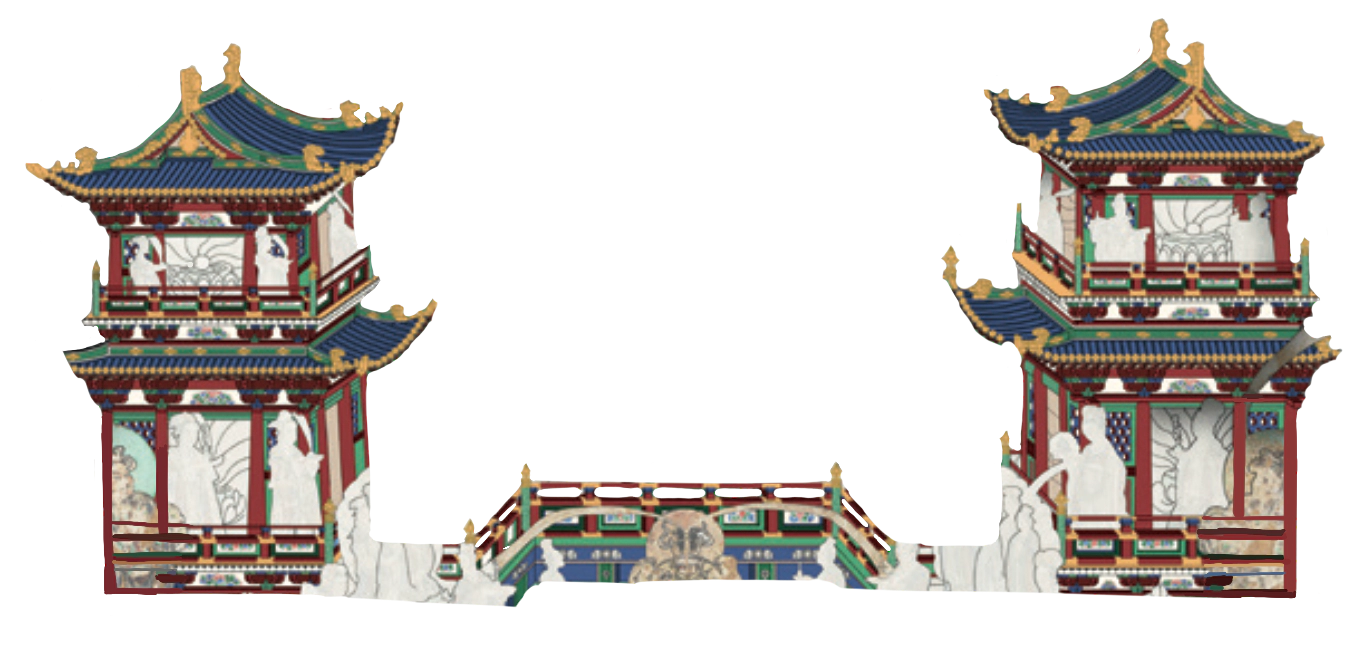 Two pavilionsIn the courtyard, "Holding the palace at the four corners, there are four precious pillars... There are thousands of pavilions, and maṇi jewels are used for decoration."*Reference: YANG Yifei, LI Luke, and ZHAO Lingjie. “Architectural Representation of the Tusita Heavenly Palace at Kaihua Monastery in Gaoping.” Journal of Architectural History, no. 2, 28 Sept. 2022, pp. 147.
Two pavilionsIn the courtyard, "Holding the palace at the four corners, there are four precious pillars... There are thousands of pavilions, and maṇi jewels are used for decoration."*Reference: YANG Yifei, LI Luke, and ZHAO Lingjie. “Architectural Representation of the Tusita Heavenly Palace at Kaihua Monastery in Gaoping.” Journal of Architectural History, no. 2, 28 Sept. 2022, pp. 147. -
 Concave Pool“In all the gardens, there are eight-colored lapis lazuli canals... In the canals, there is eight-flavored water, complete with eight colors. The water surges and flows between the beams and rafters, and outside the four gates, four flowers are born... On the flowers, there are twenty-four heavenly maidens.”Reference: YANG Yifei, LI Luke, and ZHAO Lingjie. “Architectural Representation of the Tusita Heavenly Palace at Kaihua Monastery in Gaoping.” Journal of Architectural History, no. 2, 28 Sept. 2022, pp. 149.
Concave Pool“In all the gardens, there are eight-colored lapis lazuli canals... In the canals, there is eight-flavored water, complete with eight colors. The water surges and flows between the beams and rafters, and outside the four gates, four flowers are born... On the flowers, there are twenty-four heavenly maidens.”Reference: YANG Yifei, LI Luke, and ZHAO Lingjie. “Architectural Representation of the Tusita Heavenly Palace at Kaihua Monastery in Gaoping.” Journal of Architectural History, no. 2, 28 Sept. 2022, pp. 149. -
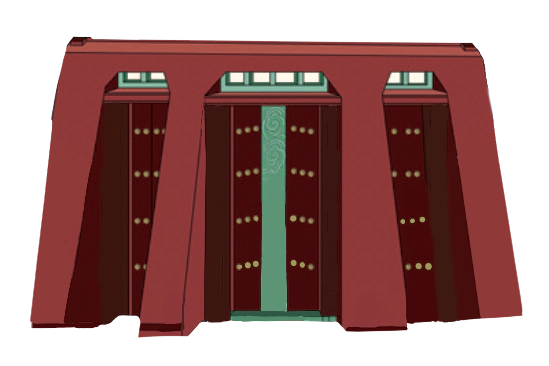 City GateThe form of this group of city towers and pavilions bears some resemblance to the Xuande Gate, located to the south of the Imperial City in the Northern Song Dynasty's capital. However, the architectural rank and complexity are somewhat lower.Reference: YANG Yifei, LI Luke, and ZHAO Lingjie. “Architectural Representation of the Tusita Heavenly Palace at Kaihua Monastery in Gaoping.” Journal of Architectural History, no. 2, 28 Sept. 2022, pp. 149.
City GateThe form of this group of city towers and pavilions bears some resemblance to the Xuande Gate, located to the south of the Imperial City in the Northern Song Dynasty's capital. However, the architectural rank and complexity are somewhat lower.Reference: YANG Yifei, LI Luke, and ZHAO Lingjie. “Architectural Representation of the Tusita Heavenly Palace at Kaihua Monastery in Gaoping.” Journal of Architectural History, no. 2, 28 Sept. 2022, pp. 149. -

 Railing and pillar with mani treasuresThe mural also depicts many railings, with lotus flowers decorating the tops of the railing columns. This is also supported by the text: "The railings and pillars are composed of countless maṇi treasures."Reference: YANG Yifei, LI Luke, and ZHAO Lingjie. “Architectural Representation of the Tusita Heavenly Palace at Kaihua Monastery in Gaoping.” Journal of Architectural History, no. 2, 28 Sept. 2022, pp. 147.
Railing and pillar with mani treasuresThe mural also depicts many railings, with lotus flowers decorating the tops of the railing columns. This is also supported by the text: "The railings and pillars are composed of countless maṇi treasures."Reference: YANG Yifei, LI Luke, and ZHAO Lingjie. “Architectural Representation of the Tusita Heavenly Palace at Kaihua Monastery in Gaoping.” Journal of Architectural History, no. 2, 28 Sept. 2022, pp. 147.
-
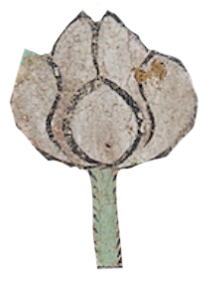
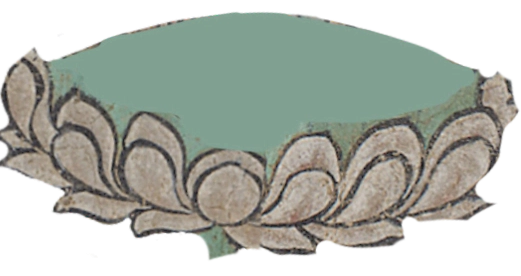 Lotus Flowers“In all the gardens, there are eight-colored lapis lazuli canals... In the canals, there is eight-flavored water, complete with eight colors. The water surges and flows between the beams and rafters, and outside the four gates, four flowers are born... On the flowers, there are twenty-four heavenly maidens.”Reference: YANG Yifei, LI Luke, and ZHAO Lingjie. “Architectural Representation of the Tusita Heavenly Palace at Kaihua Monastery in Gaoping.” Journal of Architectural History, no. 2, 28 Sept. 2022, pp. 149.
Lotus Flowers“In all the gardens, there are eight-colored lapis lazuli canals... In the canals, there is eight-flavored water, complete with eight colors. The water surges and flows between the beams and rafters, and outside the four gates, four flowers are born... On the flowers, there are twenty-four heavenly maidens.”Reference: YANG Yifei, LI Luke, and ZHAO Lingjie. “Architectural Representation of the Tusita Heavenly Palace at Kaihua Monastery in Gaoping.” Journal of Architectural History, no. 2, 28 Sept. 2022, pp. 149. -
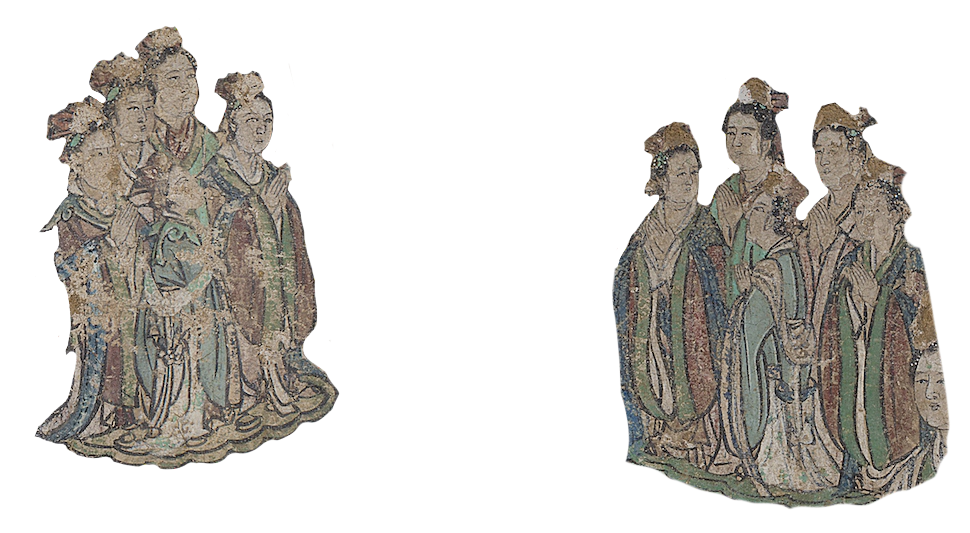 Heavenly Ladies“In all the gardens, there are eight-colored lapis lazuli canals... In the canals, there is eight-flavored water, complete with eight colors. The water surges and flows between the beams and rafters, and outside the four gates, four flowers are born... On the flowers, there are twenty-four heavenly maidens.”Reference: YANG Yifei, LI Luke, and ZHAO Lingjie. “Architectural Representation of the Tusita Heavenly Palace at Kaihua Monastery in Gaoping.” Journal of Architectural History, no. 2, 28 Sept. 2022, pp. 149.
Heavenly Ladies“In all the gardens, there are eight-colored lapis lazuli canals... In the canals, there is eight-flavored water, complete with eight colors. The water surges and flows between the beams and rafters, and outside the four gates, four flowers are born... On the flowers, there are twenty-four heavenly maidens.”Reference: YANG Yifei, LI Luke, and ZHAO Lingjie. “Architectural Representation of the Tusita Heavenly Palace at Kaihua Monastery in Gaoping.” Journal of Architectural History, no. 2, 28 Sept. 2022, pp. 149. -
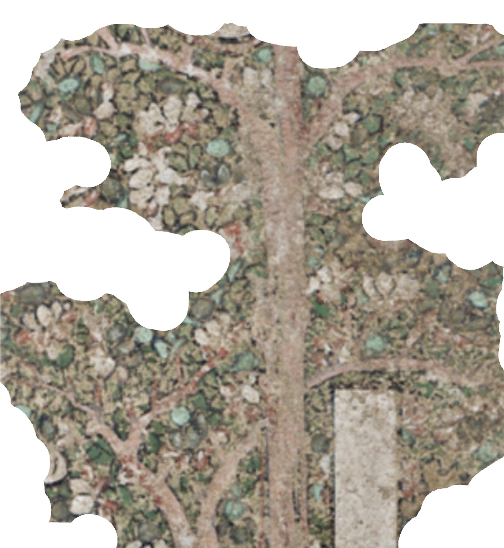 Tree with mani jewels“Below the tower, there are precious trees and dragon kings, corresponding to the text.”Reference: YANG Yifei, LI Luke, and ZHAO Lingjie. “Architectural Representation of the Tusita Heavenly Palace at Kaihua Monastery in Gaoping.” Journal of Architectural History, no. 2, 28 Sept. 2022, pp. 146.
Tree with mani jewels“Below the tower, there are precious trees and dragon kings, corresponding to the text.”Reference: YANG Yifei, LI Luke, and ZHAO Lingjie. “Architectural Representation of the Tusita Heavenly Palace at Kaihua Monastery in Gaoping.” Journal of Architectural History, no. 2, 28 Sept. 2022, pp. 146.
-
 Column“In the middle section of the corridor, the curled brackets on the vertical columns can be clearly seen, and the main hall with three bays in width features octagonal columns, which are important characteristics of the wooden columns of the Northern Song Dynasty. The main buildings of the Tusita Heaven also demonstrate the practice of adding horizontal beams and Sichuan-style columns, which are rarely seen in existing wooden structures from the Northern Song Dynasty.”Reference: YANG Yifei, LI Luke, and ZHAO Lingjie. “Architectural Representation of the Tusita Heavenly Palace at Kaihua Monastery in Gaoping.” Journal of Architectural History, no. 2, 28 Sept. 2022, pp. 150.
Column“In the middle section of the corridor, the curled brackets on the vertical columns can be clearly seen, and the main hall with three bays in width features octagonal columns, which are important characteristics of the wooden columns of the Northern Song Dynasty. The main buildings of the Tusita Heaven also demonstrate the practice of adding horizontal beams and Sichuan-style columns, which are rarely seen in existing wooden structures from the Northern Song Dynasty.”Reference: YANG Yifei, LI Luke, and ZHAO Lingjie. “Architectural Representation of the Tusita Heavenly Palace at Kaihua Monastery in Gaoping.” Journal of Architectural History, no. 2, 28 Sept. 2022, pp. 150. -
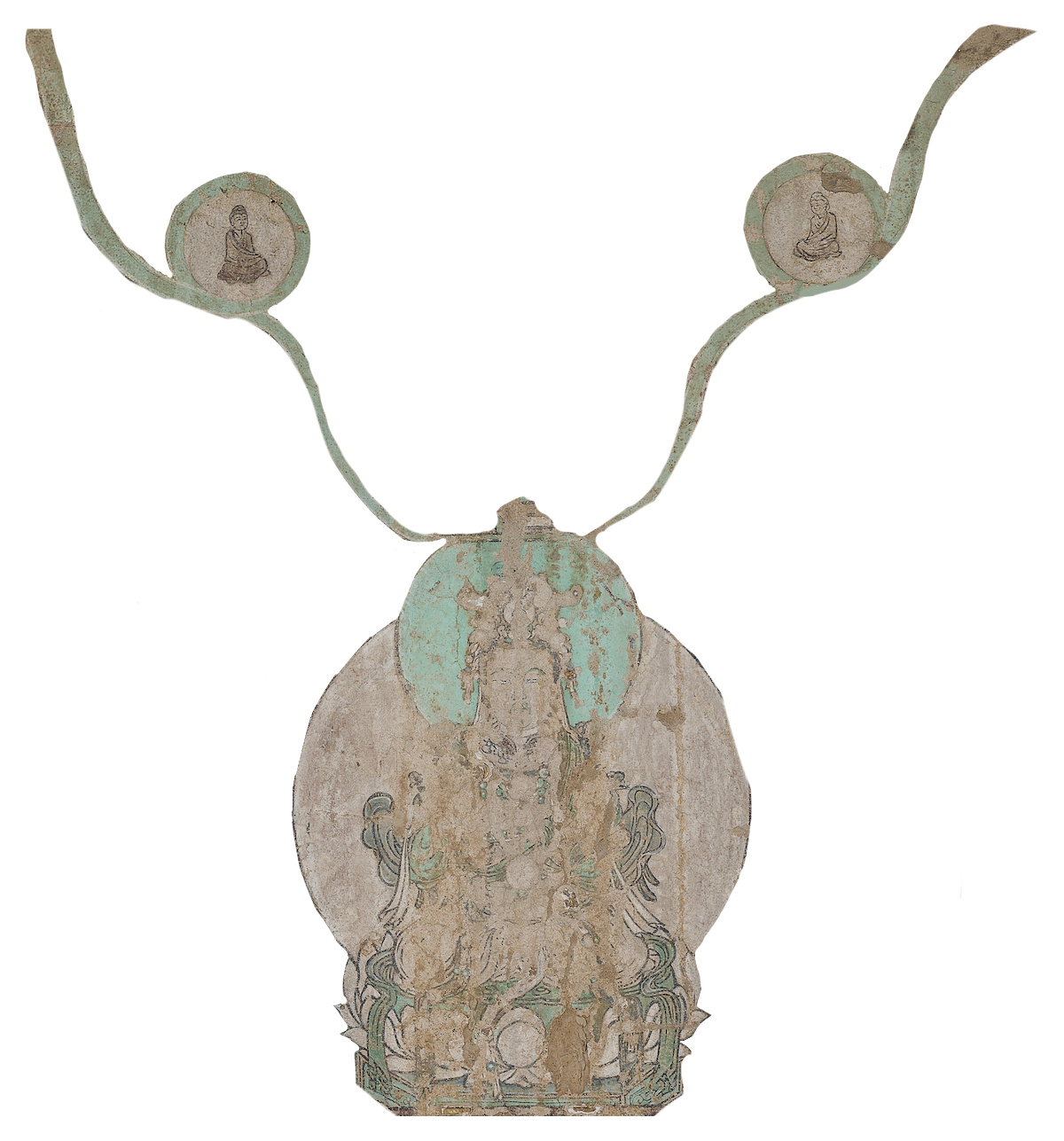 Maitreya Buddha“In the courtyard, there is a Good Dharma Hall where Maitreya Bodhisattva resides. In the mural, a complete courtyard represents the inner courtyard of the Dharma Hall. The main hall of the three openings at the top is the Good Dharma Hall, where Maitreya Bodhisattva sits on a Mañjuśrī throne.”Reference: YANG Yifei, LI Luke, and ZHAO Lingjie. “Architectural Representation of the Tusita Heavenly Palace at Kaihua Monastery in Gaoping.” Journal of Architectural History, no. 2, 28 Sept. 2022, pp. 147.
Maitreya Buddha“In the courtyard, there is a Good Dharma Hall where Maitreya Bodhisattva resides. In the mural, a complete courtyard represents the inner courtyard of the Dharma Hall. The main hall of the three openings at the top is the Good Dharma Hall, where Maitreya Bodhisattva sits on a Mañjuśrī throne.”Reference: YANG Yifei, LI Luke, and ZHAO Lingjie. “Architectural Representation of the Tusita Heavenly Palace at Kaihua Monastery in Gaoping.” Journal of Architectural History, no. 2, 28 Sept. 2022, pp. 147. -

 Dougong“In the mural, both reinforced brackets and plain brackets are used, and the plain brackets are decorated with evenly distributed white dots as painted patterns, similar to those found on the lintels and inner brackets of the South Zen Temple's main hall. The dougong brackets in the mural are depicted with four or five layers of wooden pieces, forming the shape of coiled heads or angled heads. The five-layer dougong brackets are similar to those on the eaves of the Kaifa Temple's main hall, reflecting the imitation of real-life architecture in the mural.”Reference: YANG Yifei, LI Luke, and ZHAO Lingjie. “Architectural Representation of the Tusita Heavenly Palace at Kaihua Monastery in Gaoping.” Journal of Architectural History, no. 2, 28 Sept. 2022, pp. 150.
Dougong“In the mural, both reinforced brackets and plain brackets are used, and the plain brackets are decorated with evenly distributed white dots as painted patterns, similar to those found on the lintels and inner brackets of the South Zen Temple's main hall. The dougong brackets in the mural are depicted with four or five layers of wooden pieces, forming the shape of coiled heads or angled heads. The five-layer dougong brackets are similar to those on the eaves of the Kaifa Temple's main hall, reflecting the imitation of real-life architecture in the mural.”Reference: YANG Yifei, LI Luke, and ZHAO Lingjie. “Architectural Representation of the Tusita Heavenly Palace at Kaihua Monastery in Gaoping.” Journal of Architectural History, no. 2, 28 Sept. 2022, pp. 150.
Palatial Complex in the Mural

*Reference: YANG Yifei, LI Luke, and ZHAO Lingjie. “Architectural Representation of the Tusita Heavenly Palace at Kaihua Monastery in Gaoping.” Journal of Architectural History, no. 2, 28 Sept. 2022, pp. 14-159.
